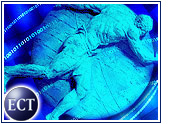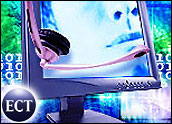
In its infancy, e-commerce disappointed merchants and investors who staked millions on the notion that it would somehow change the world forever. But e-commerce has grown up, and experts say it is making solid contributions to society even if the hype has faded.
Instead of eliciting wows — mostly on the part of its promoters — analysts told the E-Commerce Times that online commerce is showing concrete results, thanks to a multichannel array of ways to reach consumers.
“The problem is that you can only hold on to the wow factor for so long,” Giga Information Group analyst Steve Telleen told the E-Commerce Times. “At some point, you have to deliver.”
Razzle-Dazzle Fizzles
Telleen, vice president of Giga’s Web Site ScoreCard service, said a transformation occurred when businesses realized Web customers were not looking for razzle-dazzle. They were seeking easy-to-use sites that either made an online purchase simple or gave them information they needed to complete their shopping trip at a brick-and-mortar location.
“It’s just another sales venue. It didn’t change the world,” Telleen noted. “Businesses have come to realize that being a Web site can’t be your sole purpose in life.”
GartnerG2 research director David Schehr said e-commerce’s transformation from novel to useful began about 18 months ago. In addition, he said, there never really was a “wow” attitude among consumers.
Schehr said shoppers initially did not take to the Web because many hyped services offered no real cost or convenience advantages over offline stores. As the technology underpinning e-commerce sites has become mainstream and as Internet use has risen, consumers have remained selective about online buying.
“People came to the realization, ‘It’s good for buying some things, it’s not good for other things, and I think I have a handle on this,'” Schehr told the E-Commerce Times.
Channels Converge
Schehr said time-strapped shoppers are doing less browsing and surfing. As the Internet becomes ubiquitous, consumers are finding out about sites through word-of-mouth, catalogs and other media.
According to Schehr, sales channels have blended so much that Williams Sonoma recently said between 50 and 60 percent of its customers first use its print catalog for browsing, most likely because flipping through printed pages is faster than downloading Web pages. Shoppers then use the company’s Web site to make purchases, minimizing phone waits and paperwork.
As e-commerce becomes a natural part of the shopping experience, it is gradually racking up successes, but the wins have garnered a much lower profile than some early debacles.
Success Arrives Quietly
“There was so much negative hype in 2001 about the Net that everyone missed an important trend — e-commerce rocked on,” Forrester Research principal analyst Bruce Temkin told the E-Commerce Times. “Despite the massive fallout of dot-coms, people increasingly bought more things on the Net.”
According to Forrester’s Online Retail Index, consumer sales hit US$47.6 billion in 2001, a 12 percent increase over the previous year. On the business-to-business side, Temkin said, Forrester found that the average amount of materials bought online by companies jumped from 7.1 percent of all purchases in the third quarter of 2001 to 9.5 percent in the fourth quarter.
“The Net has become a bona fide channel, not a novelty,” Temkin said. “So, with all of the thrill and excitement gone, companies need to get back to business and figure out how to make the Net work for them.”
Experts said companies are reacting in different ways to the mainstreaming of e-commerce. Gartner’s Schehr noted that several prominent retailers — including Wal-Mart, Kmart and Nordstrom — recently have moved to “repatriate” Internet presences that they once tried to spin off as separate business entities.
Getting Smarter
Other companies are finding creative ways to mix channels. Giga’s Telleen, for example, said that outdoor goods retailer REI has had significant sales success with in-store kiosks that let customers research and order merchandise online.
“For Best Buy, that could mean getting more in-store shoppers to use kiosks for configuring PCs,” Forrester’s Temkin said. “Why? Their customers spend more on a PC when they use the kiosks than when they buy off of the floor.”
“Payless Shoes, on the other hand, offers online shoppers a free-shipping option — [allowing them to pick] up their purchases at a designated store,” Temkin added.
Tech Hook Not Enough
As various channels merge in shoppers’ minds, Temkin said, retailers can probably forget about now-quaint assumptions that the high-tech factor will seal the deal.
“As always, companies will find ways to innovatively differentiate themselves,” he explained. “But just putting ‘e’ in front of your name or ‘dot-com’ in back of your name isn’t really innovative.”
“Smart firms will figure out how to blend the Net with disciplines like logistics,customer service, product development and marketing,” Temkin added.
























































Social Media
See all Social Media